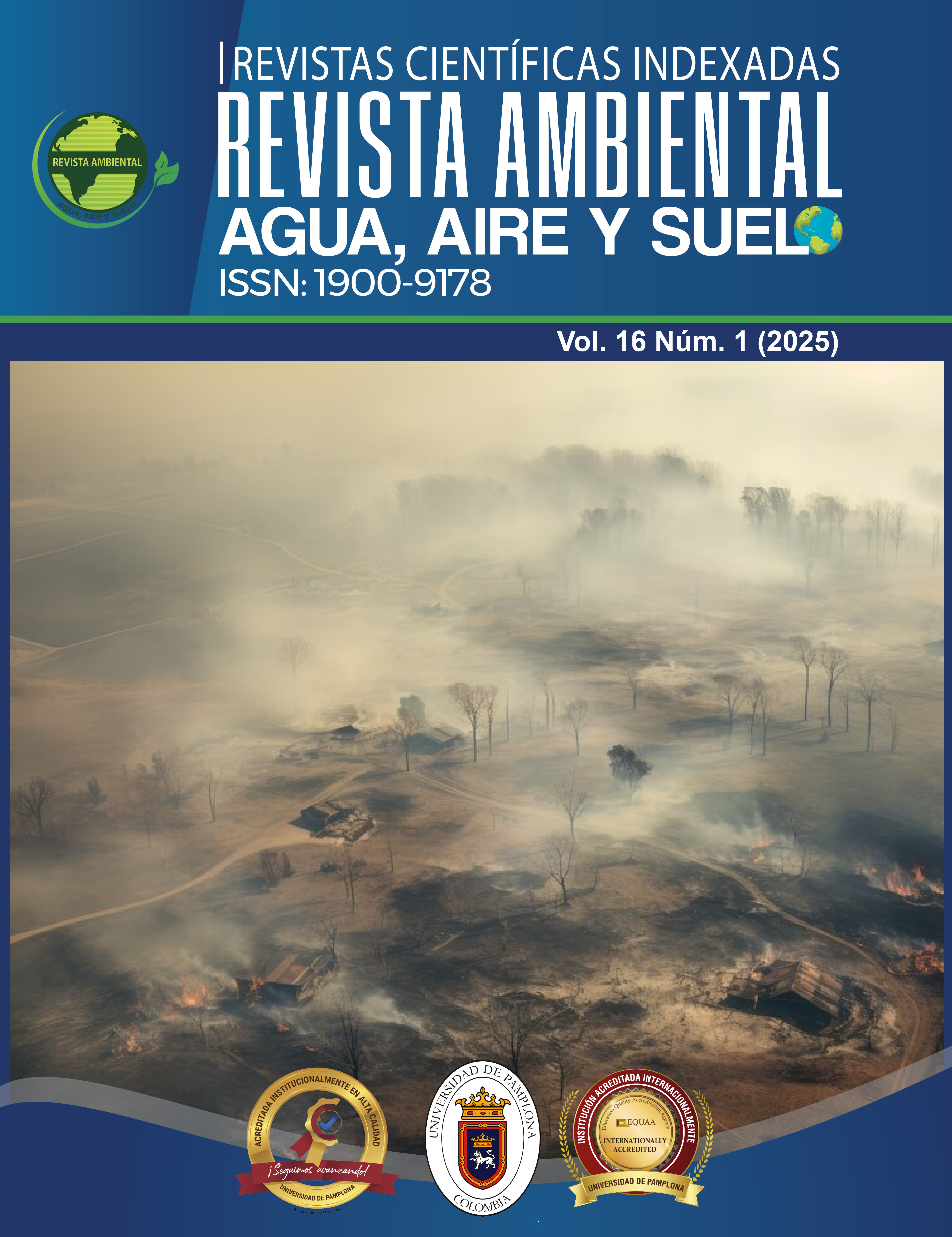Explorando perspectivas técnicas, metodológicas y organizativas recientes sobre prácticas de green software
DOI:
https://doi.org/10.24054/raaas.v16i1.3706Palabras clave:
Software ecológico, optimización energética, huella de carbonoResumen
La ejecucion de algoritmos sofisticados especialmente en aplicaciones de inteligencia artificial y en la nube ha acelerado el consumo energetico y las emisiones de CO2 asociadas a su generacion. Este estudio realiza una revision sistematica de la literatura reciente sobre practicas de software ecologico y su potencial para minimizar la huella de carbono en el sector de las tecnologias de la informacion y las comunicaciones TIC. Los resultados ilustran la creciente adopcion de tecnicas de optimizacion energetica como el paradigma RMVRVM Remote Model View Remote View Model estrategias eficientes de ajuste de modelos de lenguaje de gran tamano y el desarrollo de metricas y metodologias para cuantificar el impacto de las aplicaciones. Sin embargo se observa la falta de una adopcion unificada de estandares y enfoques sostenibles a nivel organizacional. Se concluye que la integracion temprana de criterios de eficiencia energetica y responsabilidad social a lo largo del ciclo de vida del software es crucial para reducir significativamente el impacto ambiental de la tecnologia y que es fundamental mejorar la formacion de los profesionales.
Descargas
Citas
Ahmad Ibrahim, S. R., Yahaya, J., & Sallehudin, H. (2022). Green software process factors: A qualitative study. Sustainability (Switzerland), 14(18), 11180. https://doi.org/10.3390/su141811180
Calero, C., García-Rodríguez de Guzmán, I., Moraga, M. A., & García, F. (2019). Is software sustainability considered in the CSR of software industry? International Journal of Sustainable Development and World Ecology, 26(5), 439–459. https://doi.org/10.1080/13504509.2019.1590746
Castaño, J., Martínez-Fernández, S., Franch, X., & Bogner, J. (2023). Exploring the carbon footprint of Hugging Face’s ML models: A repository mining study. 2023 International Symposium on Empirical Software Engineering and Measurement (ESEM). https://doi.org/10.1109/ESEM56168.2023.10304801
Castellanos-Nieves, D., & García-Forte, L. (2023). Improving automated machine-learning systems through green AI. Applied Sciences (Switzerland), 13(20), 11583. https://doi.org/10.3390/app132011583
Dick, M., Drangmeister, J., Kern, E., & Naumann, S. (2013). Green software engineering with agile methods. 2013 2nd International Workshop on Green and Sustainable Software (GREENS), 78–85. https://doi.org/10.1109/GREENS.2013.6606425
Everman, B., Villwock, T., Chen, D., Soto, N., Zhang, O., & Zong, Z. (2023). Evaluating the carbon impact of large language models at the inference stage. 2023 IEEE International Performance, Computing, and Communications Conference (IPCCC), 150–157. https://doi.org/10.1109/IPCCC59175.2023.10253886
Green in software engineering. (s. f.). Recuperado el 15 de marzo de 2025, de https://springerlink.unalproxy.elogim.com/book/10.1007/978-3-319-08581-4
Gupta, S., & Gupta, A. (2025). Advancing carbon-efficient software development: A sustainable path forward. Proceedings of the 26th International Conference on Distributed Computing and Networking (ICDCN), 325–330. https://doi.org/10.1145/3700838.3703670
Henríquez, C., Pérez, J. D. R., & Sánchez-Torres, G. (2024). Aplicaciones de la inteligencia artificial en el monitoreo y conservación ambiental: Una revisión exploratoria. Revista Ambiental Agua, Aire y Suelo, 15(2), Article 2. https://doi.org/10.24054/raaas.v15i2.3189
Inayatullah, Widhiarso, W., & Stiawan, D. (2024). Energy efficiency in sustainable software development: Clean code approaches. Proceedings of the 4th International Conference on Electrical Engineering and Computer Science (ICECOS), 101–105. https://doi.org/10.1109/ICECOS63900.2024.10791178
Jayanthi, H., Kulkarni, A., Patil, A. E., & S. V, S. (2021). An organizational structure for sustainable software development. Proceedings of the 3rd International Conference on Advances in Computing, Communication Control and Networking (ICAC3N), 1539–1542. https://doi.org/10.1109/ICAC3N53548.2021.9725722
Mehra, R., Sharma, V. S., Kaulgud, V., Podder, S., & Burden, A. P. (2022). Towards a green quotient for software projects. Proceedings of the International Conference on Software Engineering (ICSE), 295–296. https://doi.org/10.1109/ICSE-SEIP55303.2022.9793921
Moreira, A., Lago, P., Heldal, R., Betz, S., Brooks, I., Capilla, R., Coroama, V. C., Duboc, L., Fernandes, J. P., Leifler, O., Nguyen, N.-T., Oyedeji, S., Penzenstadler, B., Peters, A.-K., Porras, J., & Venters, C. C. (2024). A roadmap for integrating sustainability into software engineering education. ACM Transactions on Software Engineering and Methodology, 33(1). https://doi.org/10.1145/3708526
Murugesan, S. (2008). Harnessing green IT: Principles and practices. IT Professional, 10(1), 24–33. https://doi.org/10.1109/MITP.2008.10
Naumann, S., Dick, M., Kern, E., & Johann, T. (2011). The GREENSOFT model: A reference model for green and sustainable software and its engineering. Sustainable Computing: Informatics and Systems, 1(4), 294–304. https://doi.org/10.1016/j.suscom.2011.06.004
Nayak, K., Route, S., Sundararajan, M., Jain, A., & Shashidhar, R. (2024). Sustainable continuous testing in DevOps pipeline. 2024 1st International Conference on Communications and Computer Science (InCCCS). https://doi.org/10.1109/INCCCS60947.2024.10593566
Ríos, R. A. B. (2024). Best practices for green (sustainable) software development using artificial intelligence. European Public and Social Innovation Review, 9. https://doi.org/10.31637/epsir-2024-436
Schott, V., & Ovtcharova, J. (2024). Integrating sustainability into software development: A global categorization. In Finance and Law in the Metaverse World (pp. 59–69). Springer, Cham. https://doi.org/10.1007/978-3-031-67547-8_6
Singh, L., Tiwari, S., & Srivastava, S. (2024). A study on creating energy efficient cloud-connected user applications using the RMVRVM paradigm. Journal of Systems and Software, 213, 112033. https://doi.org/10.1016/j.jss.2024.112033
Tiwari, R., Thombre, S., Patel, D., Tilokani, K., & Amritkar, S. (2023). Evaluating code sustainability: A comprehensive study of metrics and tools. 2023 IEEE Engineering Informatics (EI). https://doi.org/10.1109/IEEECONF58110.2023.10520542
Vergallo, R., Cagnazzo, A., Mele, E., & Casciaro, S. (2024). Measuring the effectiveness of the ‘Batch Operations’ energy design pattern to mitigate the carbon footprint of communication peripherals on mobile devices. Sensors, 24(22), 7246. https://doi.org/10.3390/s24227246
Vergallo, R., & Mainetti, L. (2024). Measuring the effectiveness of carbon-aware AI training strategies in cloud instances: A confirmation study. Future Internet, 16(9), 334. https://doi.org/10.3390/fi16090334
Wedyan, F., Morrison, R., & Abuomar, O. S. (2023). Integration and unit testing of software energy consumption. 2023 10th International Conference on Software Defined Systems (SDS), 60–64. https://doi.org/10.1109/SDS59856.2023.10329262
Xu, Y., Martínez-Fernández, S., Martinez, M., & Franch, X. (2023). Energy efficiency of training neural network architectures: An empirical study. Proceedings of the Annual Hawaii International Conference on System Sciences (HICSS), 781–790. https://doi.org/10.24251/HICSS.2023.094
Descargas
Publicado
Cómo citar
Número
Sección
Licencia
Derechos de autor 2025 REVISTA AMBIENTAL AGUA, AIRE Y SUELO

Esta obra está bajo una licencia internacional Creative Commons Atribución-NoComercial 4.0.










